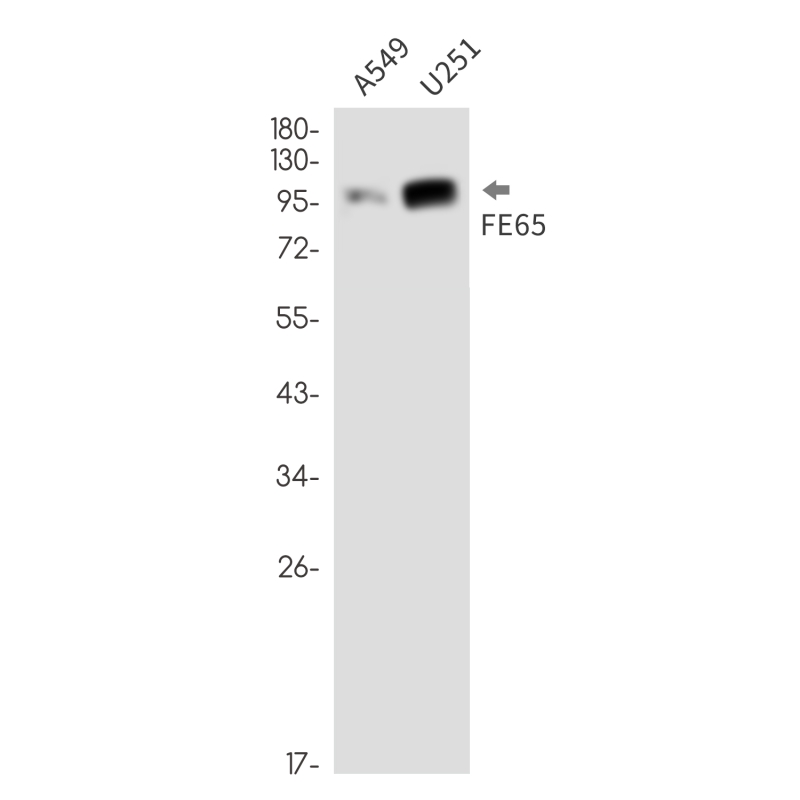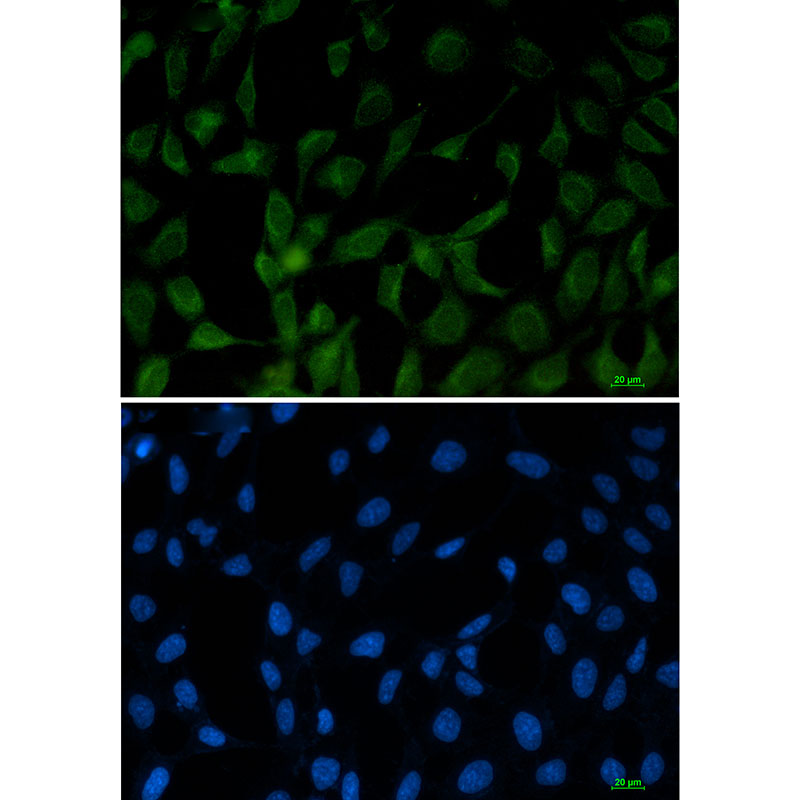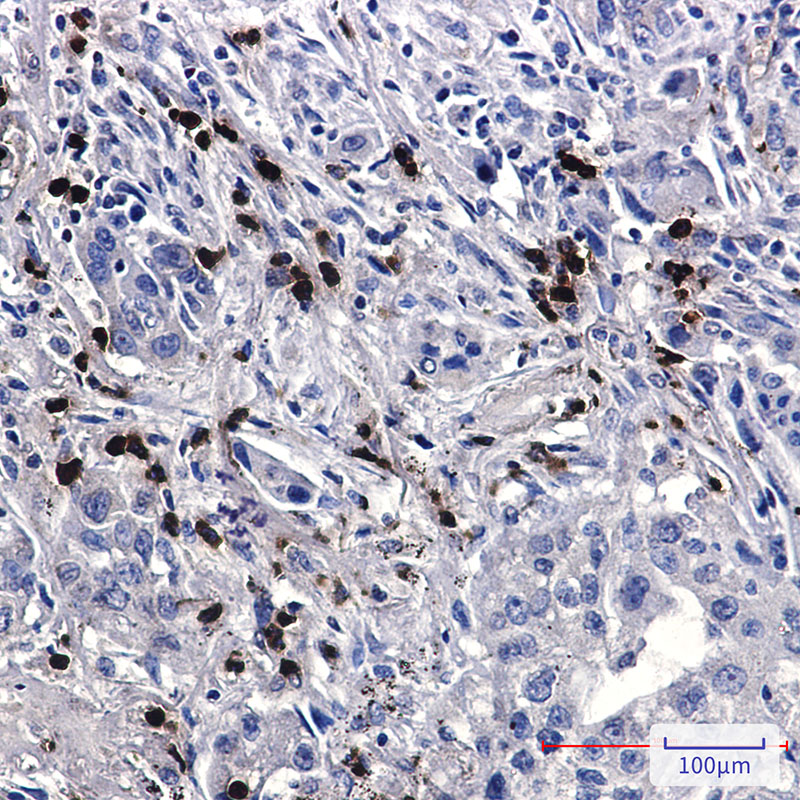


| WB | 1/500-1/1000 | Human,Mouse,Rat |
| IF | 咨询技术 | Human,Mouse,Rat |
| IHC | 1/50-1/100 | Human,Mouse,Rat |
| ICC | 1/50-1/200 | Human,Mouse,Rat |
| FCM | 咨询技术 | Human,Mouse,Rat |
| Elisa | 咨询技术 | Human,Mouse,Rat |
| Aliases | APBB1; Protein Fe65; RIR |
| Entrez GeneID | 322 |
| WB Predicted band size | Calculated MW: 77 kDa; Observed MW: 100 kDa |
| Host/Isotype | Rabbit IgG |
| Antibody Type | Primary antibody |
| Storage | Store at 4°C short term. Aliquot and store at -20°C long term. Avoid freeze/thaw cycles. |
| Species Reactivity | Human |
| Immunogen | A synthetic peptide of human FE65 |
| Formulation | Purified antibody in TBS with 0.05% sodium azide,0.05%BSA and 50% glycerol. |
+ +
以下是关于FE65抗体的3篇参考文献及其摘要:
---
1. **文献名称**:*FE65蛋白与淀粉样前体蛋白的相互作用调控γ-分泌酶介导的APP加工*
**作者**:Suzuki T. 等
**摘要**:本研究通过FE65特异性抗体进行免疫共沉淀实验,证实FE65与淀粉样前体蛋白(APP)的胞内结构域结合,促进γ-分泌酶对APP的切割,增加β-淀粉样蛋白(Aβ)的生成,提示FE65在阿尔茨海默病病理中的潜在作用。
---
2. **文献名称**:*FE65抗体揭示其在神经元突触中的定位及功能*
**作者**:Cao X. & Südhof T.C.
**摘要**:利用FE65抗体的免疫荧光技术,研究发现FE65富集于神经元突触,并与突触后蛋白PSD-95共定位。实验表明FE65通过调控突触蛋白的相互作用影响突触可塑性,为FE65在认知功能中的作用提供证据。
---
3. **文献名称**:*FE65/p53信号通路在DNA损伤反应中的新机制*
**作者**:Bruni A.C. 等
**摘要**:通过FE65抗体的Western blot分析,该研究证明FE65与肿瘤抑制蛋白p53结合,调控DNA损伤后的细胞周期停滞和凋亡,揭示了FE65在神经退行性疾病与癌症中的双重角色。
---
如需具体文献来源或更多细节,可进一步检索PubMed或Google Scholar数据库。
FE65 (also known as APBB1) is an adaptor protein involved in cellular signaling pathways, particularly those linked to the amyloid precursor protein (APP), which is associated with Alzheimer’s disease (AD) pathology. The FE65 antibody is a key tool for studying FE65's role in APP processing, neuronal function, and AD mechanisms. FE65 interacts with APP via its C-terminal phosphotyrosine-binding (PTB) domain, modulating APP trafficking and cleavage, potentially influencing amyloid-β (Aβ) production. It also regulates transcription by partnering with the histone acetyltransferase Tip60. affecting genes involved in synaptic plasticity and neurodegeneration.
FE65 antibodies are widely used in neuroscience research to detect FE65 expression, localization, and protein interactions. They enable investigations into FE65's dual roles: (1) facilitating APP processing and Aβ generation, and (2) participating in DNA repair, cell motility, and gene regulation. Studies using FE65 knockout models and antibody-based assays suggest its involvement in tau phosphorylation and neuroinflammation, linking it to AD progression. Commercially available FE65 antibodies are optimized for techniques like Western blotting, immunoprecipitation, and immunofluorescence, aiding mechanistic studies in AD models. However, specificity challenges require validation via knockout controls, as FE65 shares homology with FE65L1/L2 isoforms. Overall, FE65 antibodies remain critical for unraveling APP-related pathways and therapeutic targets in neurodegenerative diseases.
×